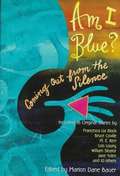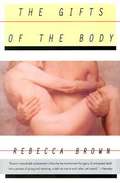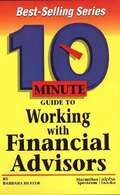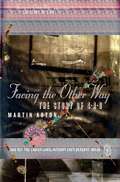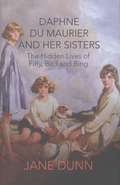- Table View
- List View
Note to Self: On Keeping a Journal and Other Dangerous Pursuits
by Samara O'SheaKeeping a journal is easy. Keeping a life-altering, soul-enlightening journal, however, is not. At its best, journaling can be among the most transformative of experiences, but you can only get there by learning how to express yourself fully and openly. Enter Samara O'Shea. O'Shea charmed readers with her elegant and witty For the Love of Letters. Now, in Note to Self, she's back to guide us through the fun, effective, and revelatory process of journaling. Along the way, selections from O'Shea's own journals demonstrate what a journal should be: a tool to access inner strengths, uncover unknown passions, face uncertain realities, and get to the center of self. To help create an effective journal, O'Shea provides multiple suggestions and exercises, including: Write in a stream of consciousness: Forget everything you ever learned about writing and just write. Let it all out: the good, bad, mad, angry, boring, and ugly. Ask yourself questions: What do I want to change about myself? What would I never change about myself? Copy quotes: Other people's words can help you figure out where you are in life, or where you'd like to be. It takes time: Don't lose faith if you don't immediately feel better after writing in your journal. Think of each entry as part of a collection that will eventually reveal its meaning to you. O'Shea's own journal entries reveal alternately moving, edgy, and hilarious stories from throughout her life, as she hits the party scene in New York, poses naked as an aspiring model, stands by as her boyfriend discovers an infidelity by (you guessed it) reading her journal, and more. There are also fascinating journal entries of notorious diarists, such as John Wilkes Booth, Anaïs Nin, and Sylvia Plath. A tribute to the healing and reflective power of the written word, Note to Self demonstrates that sometimes being completely honest with yourself is the most dangerous and rewarding pursuit of all.
America in Search of Itself (Making of the President Ser. #5): The Making of the President 1956-1980
by Theodore H. WhiteAll of us have lived through a time of collision in America: of upheavals shattering old ideas and dreams-- transforming American politics in the process. In this, the last of his prize-winning series on American presidential politics, Theodore H. White tells us of the dramas that lie behind that transformation. He sets the stage by describing the forces that have changed American politics in the twenty-five years of his reporting. He tells how American goodwill created something called the Great Society... and pushed it over the cliff. He reveals how television took over American politics--and changed its nature; and he tells the terrifying story of the Great Inflation--and how it came to undermine all American life. And he details the equally disturbing story of how Americans have been ripped apart, divided and set against each other by the hopes that inspired men of goodwill to try to bring Americans together.
Am I Blue? Coming Out from the Silence
by Marion Dane BauerShort stories dealing with gay and lesbian teens etc.
Fox Running
by R. R. KnudsonA young Native American girl is recruited to the Uinta University track team.
Ann Aurelia and Dorothy
by Natalie Savage Carlson Dale PaysonAnn Aurelia finally finds a foster mother she really likes and a friend who is lots of fun, but when her real mother comes back to claim her, she must decide with whom she wants to live.
The Shades
by Betty BrockDuring a summer vacation, an eight-year-old boy discovers he can interact with a family of shadows that are alive, and is soon called upon to save them from evil.
Passions Between Women: British Lesbian Culture 1668-1801
by Emma DonoghueA groundbreaking work of lesbian scholarship, Passions Between Women discovers and brings together for the first time stories of lesbian desires, acts, and identities from the Restoration to the beginning of the nineteenth century. Where previous historians have concluded that a combination of censorship and ignorance excluded lesbian experience from written history before our era, Emma Donoghue has decisively proved otherwise. She dispels the myth that seventeenth- and eighteenth-century lesbian culture was rarely registered in language and that lesbians of this period had no words with which to describe themselves. Far from being invisible, the figure of the woman who felt passion for women was a subject of confusion and contradiction: she could be put in a freak show as a "hermaphrodite," revered as a "romantic friend," or jailed as a "female husband." By examining a wealth of new medical, legal, and erotic source material, and rereading the classics of English literature, Emma Donoghue has uncovered narratives of an astonishing range of lesbian and bisexual identities in Britain between 1668 and 1801. Female pirates and spiritual mentors, chambermaids and queens, poets and prostitutes, country idylls and whipping clubs all take their place in her intriguing panorama of lesbian lives and revisionist and frankly sexual in its outlook, Passions Between Women boldly asserts that relationships between women were, more passionate than the "romantic friendships" oked by other scholarly works.
The Gifts of the Body
by Rebecca BrownA woman volunteer who cares for people with AIDS narrates a poignant account of the clients she comes to love in her role as a home-care aide, in a bittersweet novel about life, illness, death, and remembrance. By the author of The Children's Crusade.
A Different Face: The Life of Mary Wollstonecraft
by Emily W. SunsteinMary Wollstonecraft, author of the eighteenth-century classic, A Vindication of the Rights of Woman, is a fascinating subject for biography. She did not march through life toward specific goals of feminism, but fought her way to personal independence with a passionate, stubborn intensity at a time when women--presumed inferior--were narrowly circumscribed by law, custom and religious belief. She demanded also a ration of happiness and sexual fulfillment, refusing to conform to the model of a submissive, decorative, domestically useful woman. Possessed of great intellectual ambitions, and largely self-educated, Mary Wollstonecraft rebelled against injustice everywhere she perceived it, and gradually became a political radical. Without money or family support, she yet refused to marry for security. In 1787 she went to live in London, where she supported herself by her writing, at thirty-three composing her great work and finding herself a famous and controversial figure. In private life she had never been able to find satisfaction, however; she desperately sought affection. After two disastrous infatuations, an illegitimate child, and two attempts at suicide, she fell in love with William Godwin, finally securing the domestic tranquillity and love she yearned for, tragically dying in childbirth a few months after her marriage. The question Mary Wollstonecraft's life poses is one of great interest today: What kind of life should a woman ask for herself? Mary Wollstonecraft wanted it all--career and family, independence and attachment, intellectual achievement and love. In A Different Face the complexities and contradictions of a remarkable woman are examined as the author, drawing extensively from Mary Wollstonecraft's own writings, endows the biography with the living voice of Mary Wollstonecraft herself. Excellently researched, it is a dramatic and readable biography, consistently fair to the courageous, exasperating and vivid personality of one of England's most extraordinary women.
Women of Ideas: And What Men Have Done to Them
by Dale SpenderThis is a classic reference work and, from beginning to end, a provocative and stimulating read. With characteristic energy, humour and learning, Dale Spender has dug into the hidden past and uncovered shining examples of women's creativity and intellectual prowess which had been suppressed or stolen by men. Men have removed women from literary and historical records and deprived women of the knowledge of their intellectual heritage. Now this lost history of women's thought is set out for all to see.
The 10 Minute Guide to Working with Financial Advisors
by Barbara HetzerFinding the right person to provide guidance on important financial decisions can be difficult. This book explains the differences between the various types of financial professionals and discusses how to find them and how to check their credentials and references.
Campaign Journal: The Political Events of 1983-1984
by Elizabeth DrewThis month-by-month journal details the run-up to the 1984 U.S. Presidential election, starting in February 1983 and ending with the voting in November 1984. As the author explains in her Introduction: "The Presidential election of 1984 was both an unusual one and an important one in several respects--not all of them so obvious. The outcome may have been one-sided, but it was not inevitable, and the election bespoke a number of important things about our politics and about what was going on in our country at the time. As a writer for The New Yorker I was asked to write a journal of the election and the surrounding events--a contemporary account, with periodic entries, of what was happening and why. Through a combination of on-the-scene reporting, interviewing the candidates, their advisers, and others wise about what was happening, and my own reflection and experience, I was to provide as clear a picture as I could of what was taking place--as it was taking place. The surprising twists and turns are presented here as they happened, and as I saw them, without tidying up or hindsight."
Facing the Other Way: The Story of 4AD
by Martin AstonFACING THE OTHERWAY: THE STORY OF 4AD is the first comprehensive account of the iconic record label. Drawing on over a hundred interviews with the label’s menagerie of artists and staff, music writer and 4AD aficionado Martin Aston follows the course of the label’s defining years; initially populated by the likes of Bauhaus, The Birthday Party, Cocteau Twins, This Mortal Coil and Dead Can Dance, each band resembled a new genre on its own, before 4AD embarked on a new era with a wealth of equally startling American signings, including Throwing Muses, Pixies and The Breeders. Yet for every artistic triumph, there was a backlash. Behind the scenes, an accumulation of feuds and enforced commercial compromises in the wake of alternative music’s invasion of the mainstream left 4AD adrift and Watts-Russell a broken man, soon to sever all ties with the music industry, including his beloved label. This definitive history explains why 4AD has been called the greatest independent label of all time, one of the most influential, and certainly the most collectable. The story of 4AD is an unparalleled drama from a pivotal phase in independent music culture.
Daphne Du Maurier and Her Sisters: The Hidden Lives of Piffy, Bird, and Bing
by Jane DunnCelebrated novelist Daphne Du Maurier and her sisters, eclipsed by her fame, are revealed in all their surprising complexity in this riveting new biography. The middle sister in a famous artistic dynasty, Daphne du Maurier is one of the master storytellers of our time, author of 'Rebecca,' 'Jamaica Inn,' 'My Cousin Rachel,' and short stories, 'Don't Look Now' and the terrifying 'The Birds,' among many. Her stories were made memorable by the iconic films they inspired, three of them classic Hitchcock chillers. But her sisters Angela and Jeanne, a writer and an artist of talent, had creative and romantic lives even more bold and unconventional than Daphne's own. In this group biography they are considered side by side, as they were in life, three sisters who grew up during the 20th century in the glamorous hothouse of a theatrical family dominated by a charismatic and powerful father. This family dynamic reveals the hidden lives of Piffy, Bird & Bing, full of social non-conformity, love, rivalry and compulsive make-believe, their lives as psychologically complex as a Daphne du Maurier novel.
The Complete Idiot's Guide to 20th-Century History
by Alan AxelrodWell written history focuses on the twentieth century.
Medical, Psychosocial, and Vocational Aspects of Disability (First Edition)
by Martin G. BrodwinA textbook intended for professionals who assist disabled people
No More Heartburn
by Sherry A. RogersAQdvice by a physician about long-range techniques for avoiding heart-burn.
My Declaration Of Independence
by James M. JeffordsSenator James Jeffords of Vermont left the Republican Party on May 24, 2001, when he could no longer reconcile his beliefs with the policies of the party he had supported his whole Ault life."Looking ahead," Jeffords said, "I can see more and more instances where I will disagree with the President on very fundamental issues." In My Declaration of Independence, Jeffords explains the issues that led to this dramatic break. Foremost among them was the Bush administration's and the Republican leadership's failure to recognize the need to invest in education, now and in the future. Tracing the genesis of his decision, Jeffords describes his attempts to effect change within its party, and the pain of hurting Republican colleagues and friends. His decision came just at he moment when his defection would deprive them of the Washington trifects they had recently achieved-Republican control of the White House, the Senate, and the House of representatives. It was also going to cost many of his friends committee chairmanships they had acquired only a few months before. "But in he end," he writes, "I had to be true to what I hought was right, and leave the consequences to sort themselves out in the days ahead." In a contemporary Profiles in Courage, Senator Jeffords provides a moving, witty, and instructive example of what can happen in public life. Whether you agree with his views or not, his account of his tough decisions, and of his anguish at rejecting the last-minute appeals of the leadership of his party, the President, and his wife, is a riveting story that has wide implications for the whole country.
Out For Good: The Struggle To Build A Gay Rights Movement in America
by Dudley ClendinenThis is the definitive account of the last great struggle for equal rights in the twentieth century. From the birth of the modern gay rights movement in 1969, at the Stonewall riots in New York, through 1988, when the gay rights movement was eclipsed by the more urgent demands of AIDS activists, this is the remarkable and until now untold story of how a largely invisible population of men and women banded together to create their place in America's culture and government. Told through the voices of gay activists and their opponents, filled with dozens of colorful characters, Out for Good traces the emergence of gay rights movements in cities across the country and their transformation into a national force that changed the face of America forever
The Well Of Loneliness
by Radclyffe HallOriginally published in 1928, Radclyffe Hall's The Well of Loneliness is the timeless story of a lesbian couple's struggle to be accepted by "polite" society. When an unconventional woman named Stephen Gordon falls in love with an ingenue named Mary, their love affair gives Stephen her first taste of happiness. However, the pleasure the lovers find in each other is quickly tarnished by the disapproval of friends and family who refuse to welcome the "scandalous" couple in their homes. But the most difficult test of the women's love for each other comes when a young man offers to give Mary the "respect-ability" that Stephen can not. The Well of Loneliness is the thinly disguised story of Radclyffe Hall's own life. Shockingly candid for its time, this novel was the very first to condemn homophobic society for its unfair treatment of gays and lesbians. Banned outright in 1928, its publication marked an act of great courage which almost ruined Hall's literary career. Although half a century has passed since its initial publication, the issues of prejudice and persecution that Radclyffe Hall addresses remain sadly relevant today
Behind The Screen: How Gays and Lesbians Shaped Hollywood 1910-1969
by William J. MannWhether in or out of the closet, gays and lesbians played an essential role in shaping studio-era Hollywood. Gay actors (J. Warren Kerrigan, Marlene Dietrich, Rock Hudson), gay directors (George Cukor, James Whale, Dorothy Arzner), and gay set and costume designers (Adrian, Travis Banton, George James Hopkins) have been among the most influential individuals in Hollywood history and literally created the Hollywood mystique. This landmark study-based on seven years of exacting research and including unpublished memoirs, personal correspondence, oral histories, and scrapbooks-explores the experience of Hollywood's gays in the context of their times. Ranging from Hollywood's working conditions to the rowdy character of Los Angeles's gay underground, William J. Mann brings long overdue attention to every aspect of this powerful creative force.


